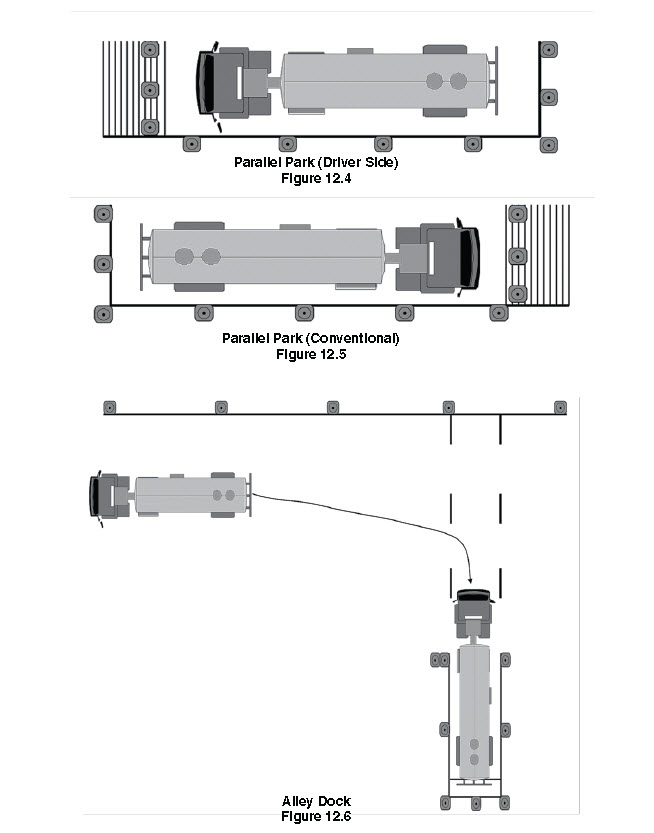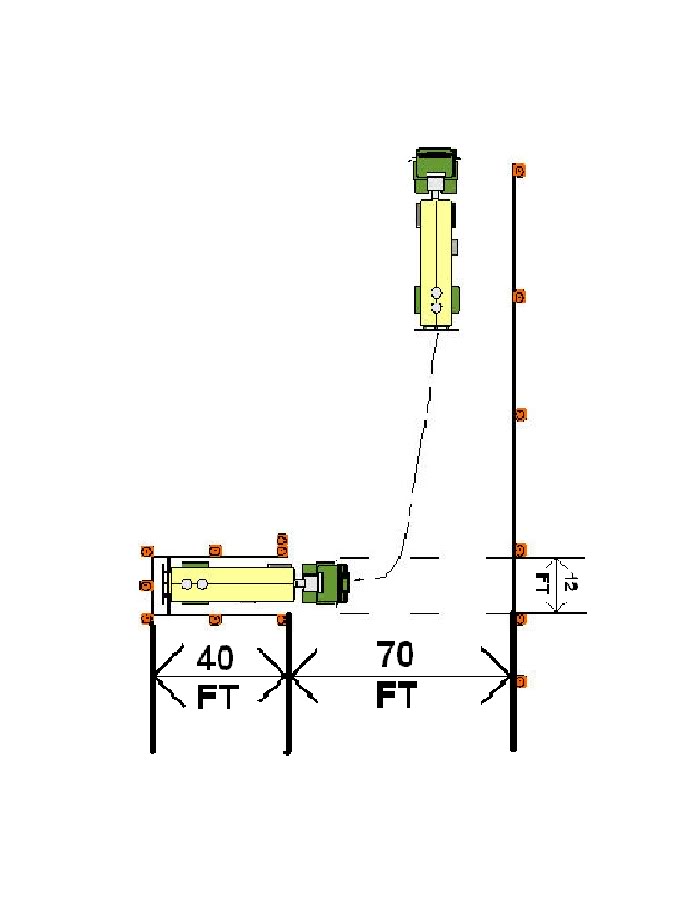How To Back Into A Parking Space For The Driving Test
An underground parking garage at the Facilities include indoor and outdoor private property belonging to a, the side of the where metered or laid out for such use, a () or car park (), indoor and outdoor, shared underground parking facilities and facilities for particular types of vehicle such as dedicated structures for cycle parking. In the U.S., after the first for motor vehicles was opened in, May 24, 1898, in began to be converted into garages.
In cities of the Eastern US, many former livery stables, with lifts for carriages, continue to operate as garages today. The following terms give regional variations. All except refer to outdoor multi-level parking facilities. In some regional dialects, some of these phrases refer also to indoor or single-level facilities. • Parking ramp (used in some parts of the upper, especially, but sometimes seen as far east as ). Elsewhere, the term 'ramp' would apply to the inclines between floors of a parking garage, but not to the entire structure itself.
The road test is the most difficult part of getting your driver’s license. We have collected some helpful tips that will make passing your driving test much easier.
• • Car park (UK, Ireland, Hong Kong, South Africa; usually single-level) • Parking structure (Western U.S.) • Parking garage (Canada and USA, where this term does not always distinguish between outdoor above-ground multi-level parking and indoor underground parking.) • Parking building (New Zealand) • Carport (open-air single-level covered parking) • Cycle park (UK, Hong Kong) • Parkade (Canada, South Africa) In addition to basic car parking/parking lots variations of serviced parking types exist. Common serviced parking types are: • • • Airport Parking • Meet and Greet Parking • Park and Fly Parking • may be variously arranged. Parking lots specifically for bicycles are becoming more prevalent in many countries.
These may include and locks, as well as more modern technologies for security and convenience. For instance, one bicycle parking lot in Tokyo has an. Economics [ ]. The examples and perspective in this article deal primarily with the United States and do not represent a of the subject.
You may, discuss the issue on the, or, as appropriate. (December 2010) () Urban parking spaces can have a high value where the price of land is high. In Boston in 2009 a single parking space sold for $300,000. Cars parked on the sidewalk in. Where car parking spaces are a scarce commodity, and owners have not made suitable arrangements for their own parking, ad hoc often takes place along sections of road where there is no planned scheme by a municipal authority to allocate roadspace.

Heated social discourse sometimes revolves around the sense of 'ownership' that informally arises. Many use and other markers, usually without approval of municipal authorities. For example, during the winter of 2005 in, the practice of some people saving convenient roadway for themselves became controversial. At that time, many Boston districts had an informal convention that if a person shoveled the snow out of a roadspace, that person could claim ownership of that space with a marker. However, city government defied that custom and cleared markers out of spaces. Festivals and sporting events often spawn a cottage industry of parking. Homeowners, schools, and businesses often make extra money by charging a for all-day parking during the event.
In some countries, such 'cottage industry parking' has become large-scale business. The UK airport parking industry is currently estimated to be worth 1.3 billion GBP per year. According to the International Parking Institute, 'parking is a $25 billion industry and plays a pivotal role in transportation, building design, quality of life and environmental issues'.
The cost of motor vehicle parking plays a major role in transportation choices (US, 1999 dollars). The value above the line represents the out-of-pocket cost per trip for each mode of transportation, while the value below the line accounts for subsidies, environmental impact, social and indirect costs. Annual parking revenue in the US alone is $10 billion. Some airports charge more for parking cars than for parking aircraft. Parking control is primarily an issue in densely populated cities in advanced countries, where the great demand for parking spaces makes them expensive and difficult. In urban locations parking control is a developing subject. Parking restrictions may be public or private.
Local government, as opposed to central government, is the primary activator in public parking. The emphasis is on restriction of on-street parking facilities; and parking charges and fines are often major income sources for local government in North America and Europe. Typically, communication about the parking status of a roadway takes the form of notices, e.g. Fixed to a nearby wall and/or road markings. Part of the requirements for passing the driving test in some countries is to demonstrate understanding of parking signs.
Motorists parking on-street in big cities often have to pay for the time the vehicle is on the spot. There are fines for overstay. The motorist is often required to display a sticker beneath the windscreen indicating that he has paid for the parking space usage for an allocated time period. Private parking control includes both residential and corporate property. Owners of private property use signs indicating that parking facilities are restricted to certain categories of people such as the owners themselves and their guests, or staff members and permitted contractors only. Main article: Parking Generation is a document produced by the Institute of Transportation Engineers (ITE) that assembles a vast array of parking demand observations predominately from the United States. It summarizes the amount of parking observed with various land uses at different times of the day/week/month/year including the peak parking demand.
While it has been assailed by some planners for lack of data in urban settings, it stands as the single largest accumulation of actual parking demand data related to land use. Anyone can submit parking demand data for inclusion. The report is updated approximately every 5 to 10 years. Finding parking [ ] that help drivers find parking take different approaches, including: • displays both the cheapest and nearest on and off street parking rules for 14 major cities in the UK including London, as well as seeing live availability of parking bays where available. It also includes daily petrol prices for every petrol station in the UK through an in-app subscription.
•,,, which allows for mobile booking at participating lots, garages and hotels, •, which lets drivers departing a parking space sell that information to drivers looking for parking. This type of app has been outlawed in Boston and San Francisco.
•, an on demand valet parking service that meets users in Central London, parks their vehicle and then delivers it subsequently • Peer-to-Peer parking aggregators, such as Parqex, RoverParking and SimpleParker, that match private parking space owners with drivers. Some have mobile apps associated with the in-car system, that can locate the car or indicate the last place it was parked. Cars with communicate to each other indicating recently vacated spots. San Francisco uses a system called, which has sensors embedded in the roadway.
It allows drivers to find parking via mobile app, web site, or SMS, and includes 'smart' and garages that use based on time and location to keep approximately 15% of parking spaces open. Some South Boston spots also have sensors, so users of an app called Parker can find vacancies. Ford Motor Company is developing a system called Parking Spotter, which allows vehicles to upload parking spot information into the cloud for other drivers to access. System provides information about the availability of parking spaces within a controlled area. The systems may include vehicle detection sensors that can count the number of available spaces and display the information on various signs. There may be indicator lights that can lead drivers to an exact available spot. See also [ ].
• Shannon Sanders McDonald: The parking garage. Design and evolution of a modern urban form, Washington 2007, p. Discount Park & Ride. 9 January 2015. Retrieved 27 March 2015. Web Urbanist. 26 March 2015.
Retrieved 27 March 2015. • Woolhouse, Megan (2009-06-10).. The Boston Globe. Retrieved 2010-07-22. Retrieved 2017-11-06.
• Vega, Cecilia (2006-02-07).. San Francisco Chronicle. Retrieved 2008-04-10. • ^ Graph based on data from Vukan R. Vuchic, Transportation for Livable Cities, p.
Boston Online. Retrieved 2008-04-10.
• Finer, Jonathan (2005-01-01).. Washington Post. Retrieved 2008-04-10. International Parking Institute.
• van Rooij, Rogier (17 November 2017).. Retrieved 17 November 2017. Retrieved 2013-01-12.
Generic Bluetooth Radio Driver Microsoft on this page. Retrieved 2013-01-12. Retrieved 2013-01-12.
• Shriver, Adam.. Retrieved 13 October 2016. Retrieved 8 July 2015. Retrieved 13 October 2015. Retrieved 19 July 2016.
Retrieved 13 October 2015. • Autoblog Staff (14 April 2015).. Retrieved 13 October 2015. • Idris, M.Y.I.; Leng, Y.Y.; Tamil, E.M.; Noor, N.M.; Razak, Z. (1 February 2009)..
Information Technology Journal. 8 (2): 101–113.:. Retrieved 24 September 2015.
External links [ ] •.
